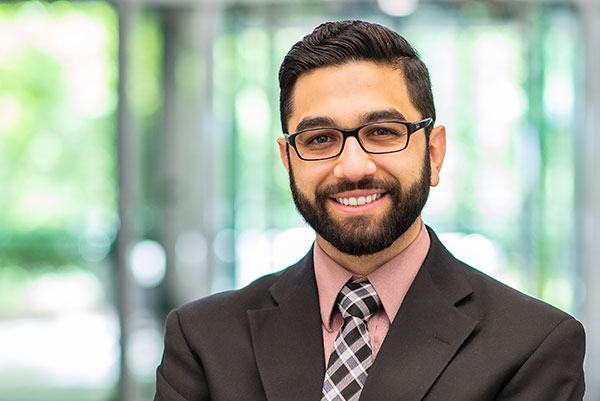Preserving evidence serves as the cornerstone upon which cases are built, providing the necessary foundation for legal recourse and justice for those who have suffered harm due to medical negligence. In the pursuit of accountability, the preservation of evidence emerges as a critical imperative, ensuring that the truth remains accessible and undeniable.
The Fragility of Memory
Human memory is inherently fallible, subject to distortion and degradation over time. In the aftermath of a medical procedure gone awry, recalling the specifics of the event becomes increasingly challenging for both patients and medical professionals alike. Details become blurred, timelines fade, and crucial elements slip through the cracks of recollection. This inherent fragility underscores the importance of preserving evidence in its most pristine and unadulterated form.
Documenting the Details
Central to the preservation of evidence is the meticulous documentation of pertinent details surrounding the medical incident in question. This documentation extends beyond mere written records to encompass a comprehensive array of evidence, including medical records, imaging studies, correspondence, and witness testimonies. Each piece of evidence serves as a vital puzzle piece, contributing to the holistic understanding of what transpired and who bears responsibility.
The Role of Technology
In an age characterized by technological advancement, the landscape of evidence preservation has undergone a transformative evolution. Digital technologies offer unprecedented opportunities for capturing, storing, and analyzing evidence with unparalleled precision and efficiency. From high-resolution imaging techniques to electronic medical records systems, technology empowers legal teams to assemble airtight cases with a wealth of irrefutable evidence at their disposal.

The Preservation Imperative
The imperative to preserve evidence extends far beyond mere legal strategy; it embodies a commitment to truth, accountability, and the safeguarding of patient rights. By preserving evidence in its most pristine state, individuals assert their agency in the pursuit of justice, demanding transparency and accountability from those entrusted with their care. In doing so, they not only seek redress for past wrongs but also strive to prevent future instances of medical negligence through systemic reform and oversight.
Navigating the Legal Terrain
In the realm of medical malpractice claims, navigating the complex terrain of legal proceedings requires a steadfast commitment to preserving evidence at every turn. From the initial stages of case evaluation to the eventual trial proceedings, diligent efforts must be made to safeguard the integrity of the evidence and counter any attempts at obfuscation or distortion. This requires a comprehensive understanding of both medical and legal intricacies, coupled with a relentless dedication to upholding the rights of the aggrieved.
Building a Strong Case
At the heart of any successful medical malpractice claim lies a foundation of meticulously preserved evidence. This evidence forms the bedrock upon which legal arguments are constructed, bolstering the credibility of claims and compelling accountability from those responsible. From witness testimonies to forensic analysis, each piece of evidence contributes to the narrative of negligence, compelling jurors to acknowledge the gravity of the harm inflicted and the need for restitution.
I had the pleasure of working against Chris on a fairly complicated case. Chris was professional during the course of litigation, and undoubtedly maintained his clients’ interests as the primary focus throughout. Due to Chris’ efficiency and advocacy for his clients, we were able to resolve the case for a reasonable amount, without spending unnecessary time and expenses. I hope to have more cases with Chris in the future, and would have no hesitation recommending Chris to handle complex personal injury matters.” - Paul T.
The Burden of Proof
Central to the success of any medical malpractice claim is the ability to meet the burden of proof, demonstrating not only that medical negligence occurred but also that it directly resulted in harm to the patient. This burden rests squarely on the shoulders of the plaintiff, requiring them to present a preponderance of evidence supporting their claims. Without robust evidence to substantiate allegations of negligence, even the most compelling legal arguments may falter in the face of judicial scrutiny.
Mitigating Risk of Evidence Tampering
In addition to preserving evidence for legal purposes, proactive measures must be taken to mitigate the risk of evidence tampering or destruction. In some cases, negligent parties may seek to conceal incriminating evidence or manipulate records to evade accountability. By promptly securing and safeguarding relevant evidence, individuals can preemptively thwart such efforts and uphold the integrity of the legal process.
The Value of Testimony
The testimony plays a pivotal role in medical malpractice claims, providing invaluable insights into the standard of care, causation, and the extent of harm suffered. From medical specialists to forensic specialists, these individuals offer authoritative perspectives that lend credence to the plaintiff’s case. However, the effectiveness of testimony hinges on the availability of corroborating evidence to substantiate their claims, highlighting the indispensable role of evidence preservation.
Challenges in Establishing Causation
One of the most formidable challenges in medical malpractice claims lies in establishing a clear causal link between the alleged negligence and the resulting harm. In cases involving complex medical conditions or preexisting health issues, discerning causation can prove exceedingly challenging. Nevertheless, with a wealth of meticulously preserved evidence at their disposal, legal teams can construct compelling narratives that elucidate the precise chain of events leading to the patient’s injury or loss.
The Emotional Toll of Legal Proceedings
Beyond the legal intricacies, it is important to acknowledge the emotional toll that medical malpractice claims can exact on plaintiffs and their families. For many, the pursuit of justice represents a deeply personal quest for closure and validation in the wake of profound suffering. As such, the preservation of evidence not only serves a practical purpose in bolstering legal arguments but also serves as a form of validation and vindication for those who have endured hardships.
Addressing Systemic Failures
Beyond the individual cases of medical malpractice, evidence preservation plays a pivotal role in addressing systemic failures within the healthcare system. By shining a spotlight on instances of negligence and holding responsible parties to account, individuals contribute to a culture of accountability and transparency that fosters continuous improvement in patient care. Through the preservation of evidence, aggrieved parties pave the way for meaningful reforms that prioritize patient safety and well-being.
The Importance of Timely Action
In matters of evidence preservation, time is of the essence. As memories fade and records deteriorate, the window of opportunity for gathering critical evidence narrows considerably. Therefore, prompt action is essential for preserving the integrity of evidence and maximizing its impact in legal proceedings. By consulting with legal professionals early in the process, individuals can gain invaluable guidance on the most effective strategies for evidence preservation and case development.
Advocating for You
If you or a loved one has been the victim of medical malpractice, do not hesitate to reach out to The Gunnels Law Firm LLC for legal guidance and representation. Our team of experienced attorneys is dedicated to advocating for the rights of the injured and holding negligent parties accountable for their actions. Contact us today to schedule a consultation and take the first step towards securing the justice and compensation you deserve.






